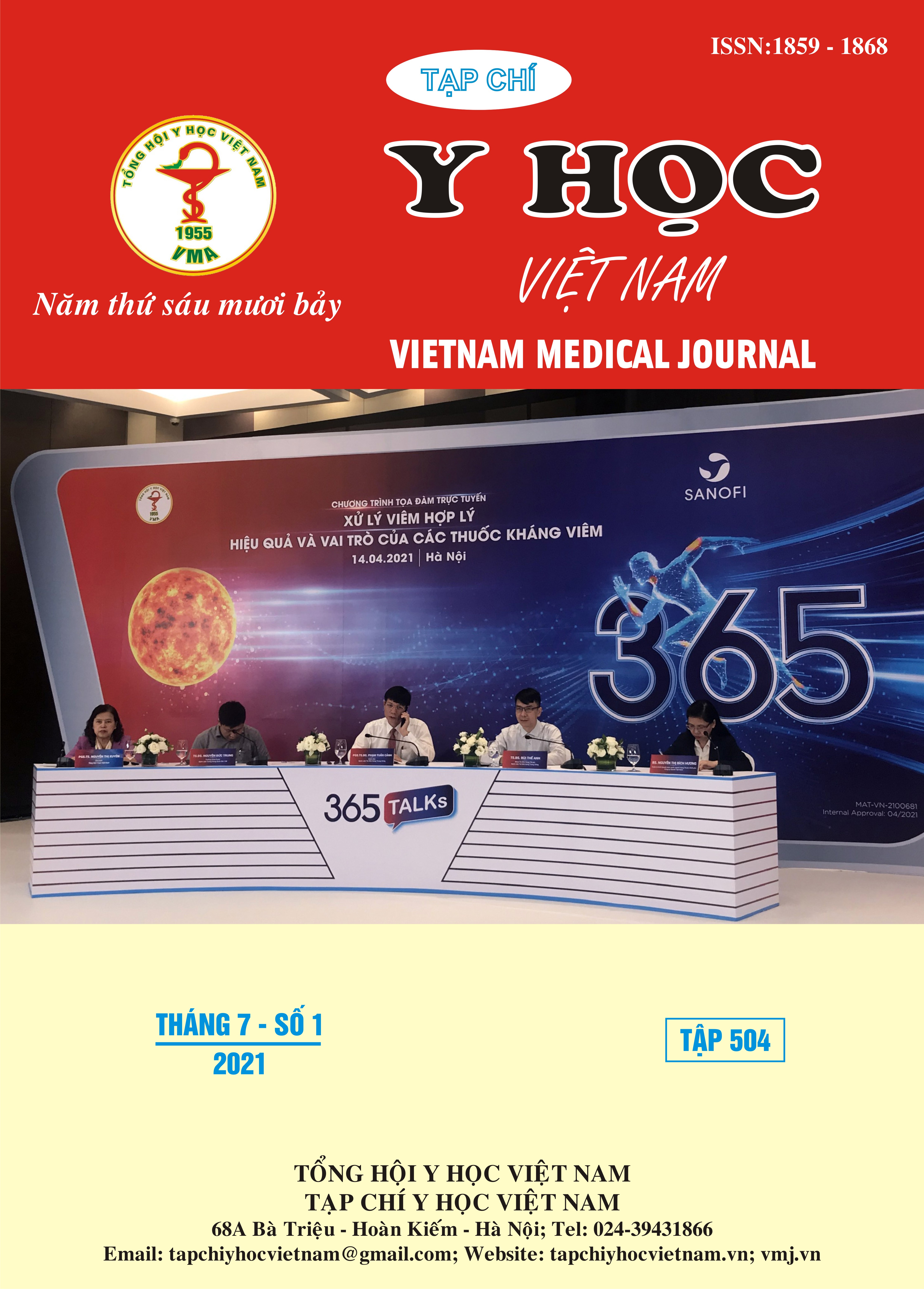DENTAL ARCH DIMENSIONAL CHANGES OF MUONG VIETNAMESE CHILDREN FROM 12 TO 14 YEARS
Main Article Content
Abstract
Objectives: To evaluate dental arch dimensional changes of Muong Vietnamese children. Material and methods: 678 dental casts were taken from 226 children of Muong ethnic group (107 males; 119 females) with parmanent dentition. Thesestudents were selected from secondary schools aged 12, according to the following criteria: Well-aligned upper and lower dental arches,parmanent dentition with 28 teeth, good facial symmetry and no previous orthodontic treatment. Dental arch dimensions were taken by one examiner using an electronic digital sliding caliper. The t-test was used to compare the dental arch dimensions ofthe subject groups.. Results: From 12 to 14 years of age, all maxillary arch widths of males and femalesincreased, the change ranged from 0.22mm to 1.34mm. This change was statistically significant (p<0, 05) . The widths of the upper posterior arches of males(U66W increased by 0.67 mm, U77W increased by 1.34 mm) increased more than that of females(U66W increased by 0.42 mm, U77W also increased by 0.42 mm). Besides, the upper intercanine withs (U33W) of males (which saw anincrease of 0.42 mm) increased more slowly than that of thefemales (which increased by0.45 mm). The males' upper middle widths (U55W) (which increased by 0.34 mm) was greater than that of thefemales upper middle widths (increased by 0.23mm). At this stage, the widths of the lower arches of both males and females increased, the change ranged from 0.01 mm to 0.77 mm. This change was statistically significant (p<0, 05). the lower intercanine withs (L33W) and the lower inter-second premolar withs of males(increasedby 0.03 and 0.01mm) increased more slowly than that of the females (increased by 0.11 and 0.08 mm). The lower posterior arch widths (L66W, L77W) of malesincreased more than that of females. Conclusions: The trend as well as the growth rate of the dental arches of Muong children between the ages of 12 and 14 has been determined.
Article Details
Keywords
Dental arch, Growth, 12-14 years old
References
2. Sillman J. Dimensional changes of the dental arches: longitudinal study from birth to 25 years. Am J Orthod Dentofacial Orthop. 964;50:600-16.
3. Cassidy KM, Harris EF, Tolley EA, Keim RG. Genetic infuence on dental arch form in orthodontic patients. Angle Orthod. 1998;68:445-54.
4. Bishara SE, Jakobsen JR, Treder J, Nowak A. Arch width changes from 6 weeks to 45 years of age. Am J Orthod Dentofacial Orthop. 1997; 111:401-9.
5. Nojima K, McLaughlin RP, Isshiki Y, Sinclair PM. A comparative study of Caucasian and Japanese mandibular clinical arch forms. Angle Orthod. 2001;71:195-200.
6. Lindsten R, Ogaard B, Larsson E, Bjerklin K. Transverse dental and dental arch depth dimensions in the mixed dentition in a skeletal sample from the 14th to the 19th century and Norwegian children and Norwegian Sami children of today. Angle Orthod. 2002;72:439-48.
7. Lê Đức Lánh (2002), Đặc điểm hình thái đầu mặt và cung răng ở trẻ em từ 12 đến 15 tuổi tại Thành phố Hồ Chí Minh, Luận án tiến sỹ y học, Trường Đại học Y Dược Thành phố Hồ Chí Minh, tr.109-116
8. Phạm Cao Phong, Lê Gia Vinh, Võ Trương Như Ngọc (2017), Sự thay đổi kích thước cung răng ở nhóm học sinh người Việt lứa tuổi 11-12, Tạp chí Y Học Việt Nam, tập 455 Số 2, Tr 1-4.


